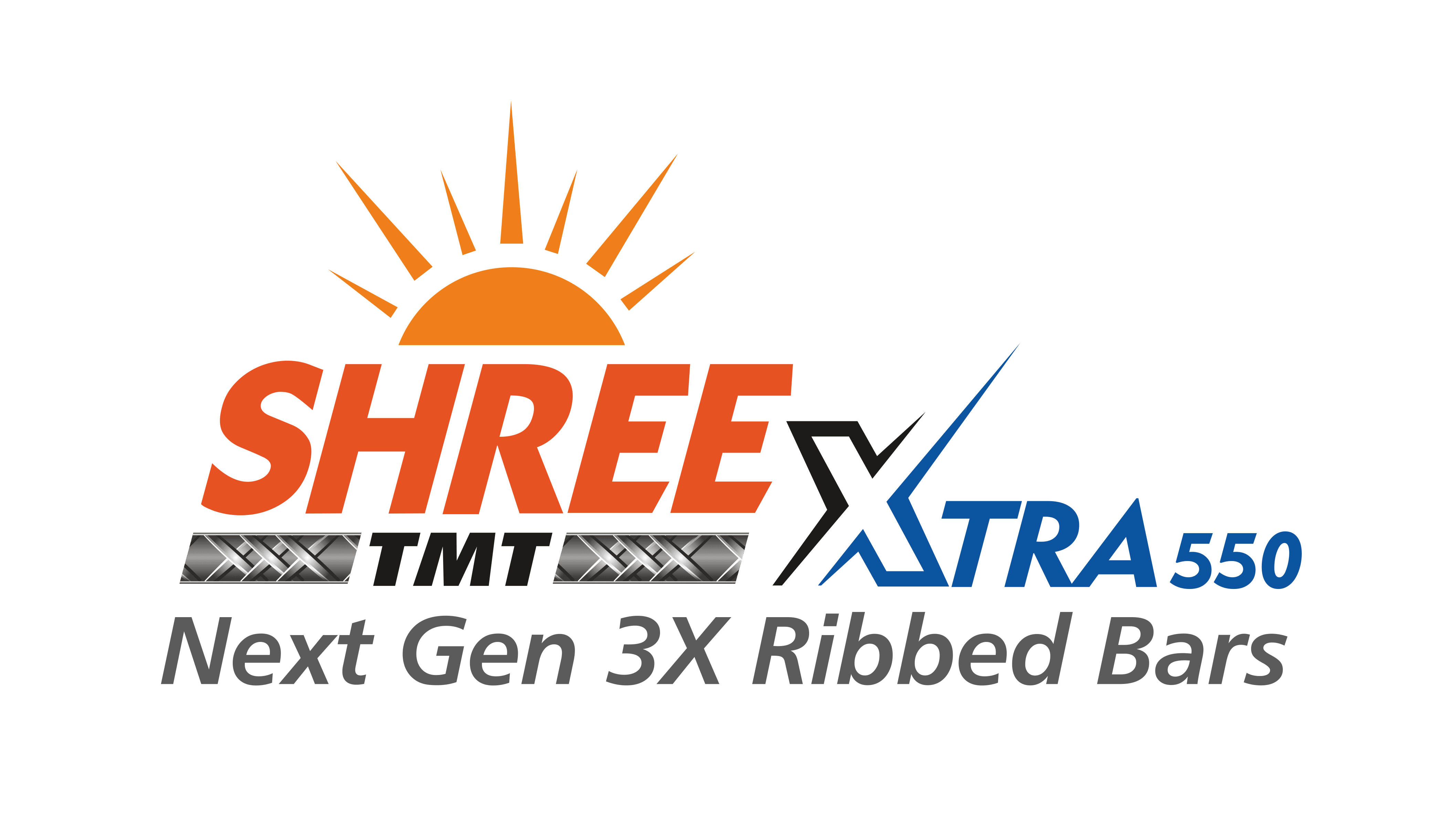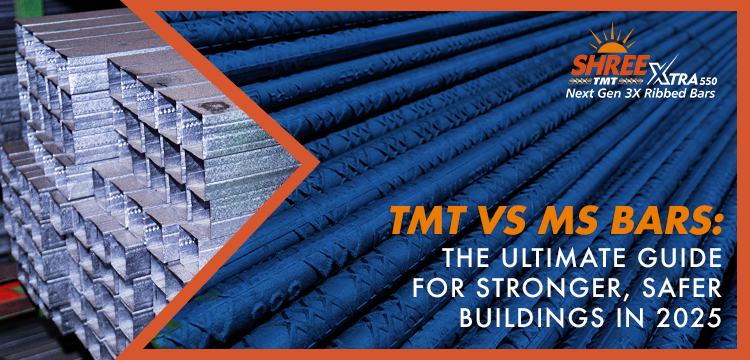TMT vs MS Bars: The Ultimate Guide forStronger, Safer Buildings in 2025
The construction industry has witnessed a significant evolution in reinforcement technology over the past few decades. The transition from traditional Mild Steel (MS) bars to Thermo-Mechanically Treated (TMT) bars represents one of the most important advancements in construction materials. This shift began gradually in the 1990s, when the limitations of MS bars became increasingly apparent in modern construction projects that required higher strength and durability. As building codes became more stringent and structural designs more complex, TMT technology emerged as the superior alternative, offering enhanced properties that MS bars couldn’t match.
By the early 2000s, most major construction projects had adopted TMT bars as the standard, and today, they dominate the market due to their superior technical specifications and performance characteristics. This transition reflects the construction industry’s commitment to embracing innovation for safer, more durable infrastructure.
TMT Bars: The Modern Choice
TMT bars represent the evolution of reinforcement technology in construction. These bars undergo a specialized manufacturing process where the outer surface is rapidly cooled while the core remains hot. This creates a tough outer layer with a softer, more ductile core—giving TMT bars their signature combination of strength and flexibility.
The benefits of TMT bars include superior tensile strength, better bendability without brittleness, and excellent resistance to earthquakes due to their high ductility. They also feature enhanced bonding with concrete due to their ribbed surface, which significantly improves the overall strength of reinforced concrete structures.
Another advantage of TMT bars is their corrosion resistance, which extends the lifespan of buildings in various environmental conditions. Modern TMT bars are also weldable, making them versatile for complex construction designs.
TMT bars have become the modern choice for several compelling reasons beyond their technical advantages:
Stringent quality testing has become a cornerstone of TMT production, with manufacturers implementing rigorous in-house quality control measures that were not as prevalent in traditional MS bar manufacturing. These tests ensure consistent performance across batches, providing engineers and builders with reliable materials that meet exact specifications.
The growing global steel market has pushed demand for better and safer products, driving innovation in the TMT sector. As construction projects become more ambitious and safety standards more exacting, the market has naturally gravitated toward superior reinforcement options.
Round MS Bars: The Traditional Option
Round MS bars, also known as mild steel bars, have been used in construction for decades before the advent of TMT technology. These bars are manufactured through hot rolling processes without the specialized cooling techniques used for TMT bars.
MS bars have a smooth surface compared to the ribbed surface of TMT bars, resulting in less effective bonding with concrete. They generally offer lower yield strength and tensile strength compared to TMT bars, which can limit their application in modern high-rise buildings and critical infrastructure.
One advantage of MS bars is their affordability, making them suitable for small-scale or non-structural applications where high strength isn’t a primary requirement.
Key Differences to Consider in 2025
The construction industry has seen several developments in reinforcement bar technology in recent years. When comparing TMT and MS bars in 2025, consider these key differences:
- Strength Properties: TMT bars now offer yield strengths of up to 600 MPa, significantly higher than the typical 250-275 MPa of MS bars.
- Earthquake Resistance: TMT bars provide superior performance in seismically active zones due to their higher ductility.
- Longevity: TMT bars can extend building lifespans by 15-20 years compared to structures using MS bars, due to better corrosion resistance.
- Building Code Compliance: Most updated building codes now recommend or require TMT bars for reinforced concrete structures, especially for multi-story buildings.
- Micro-alloying Technology: Modern TMT bars are often enhanced with micro-alloying elements like vanadium, niobium, and titanium, which MS bars lack. These trace elements significantly improve mechanical properties, including fatigue resistance, structural integrity under extreme temperatures, and overall tensile strength—crucial advantages in modern construction that traditional MS bars cannot provide.
Shree TMT: Engineering Excellence Through Advanced Metallurgy
At Shree TMT, we have perfected the art and science of producing exceptionally strong TMT bars through our proprietary manufacturing process. Our state-of-the-art quenching technology creates the optimal martensitic structure in the surface layer while maintaining a perfect ferrite-pearlite core. This, combined with our careful selection of raw materials and precision in micro-alloying compositions, results in exceptionally strong TMT bars. Our rigorous quality control measures, including comprehensive mechanical testing at every production stage, ensure that builders can rely on Shree TMT bars for the most demanding construction challenges, from high-rise buildings to critical infrastructure projects.

